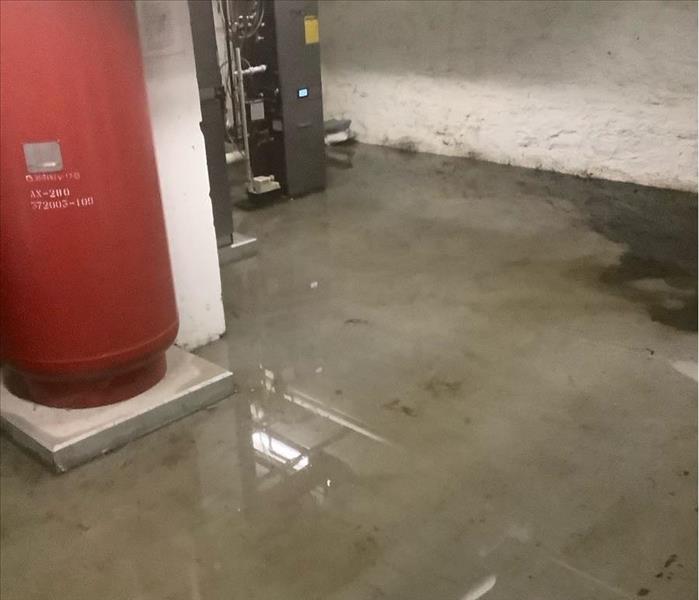Why You Should Not Use Bleach for Mold Cleanup
3/1/2022 (Permalink)
 This boiler room took on severe water damage. SERVPRO remediated the damage and stabilized the air moisture levels to prevent mold growth!
This boiler room took on severe water damage. SERVPRO remediated the damage and stabilized the air moisture levels to prevent mold growth!
Did you just spot mold in your building and are now wondering how to get rid of it? The thought of reaching for bleach to clean up mold has probably already crossed your mind, as this is something a lot of people do. However, here are three reasons why using a bleaching spray is not an effective method for fungus cleanup.
1. It Can Contribute to Mold Growth
While this may sound weird, it is true. Porous surfaces absorb the water that the cleaning agent contains, which in turn, contributes to mold growth. Hence, instead of helping you with the fungus cleanup, it makes your mold problem even worse. It is counterproductive.
2. It Is Simply Not Effective
A bleaching agent is not effective because it can only remove the mold that is sitting on the surface. All it does is remove the color, which leads you to believe that the mold is gone. The real problem here is the root system that the chlorine of the cleaning agent can’t possibly remove. It gives you a false sense of security.
3. It Is Highly Toxic and Harmful
The chlorine in bleach can damage particular materials, such as wood. If used on wood, it breaks down the fibers of the wood and weakens it, which can then lead to structural issues with your building. Even metal doesn’t react friendly to chlorine, as it is known to cause corrosion. It creates even more problems.
As you can see, bleach can only treat the symptoms and is not an effective method to clean up mold. Your problem sits much deeper, and treating the symptoms alone doesn’t solve your issue. You have to treat the cause and the roots to get rid of the mold for good. For fungus cleanup, it is highly recommended to reach out to a mold remediation professional in Blair or Bedford County, PA who knows how to kill the mold and keep it from coming back.




 24/7 Emergency Service
24/7 Emergency Service